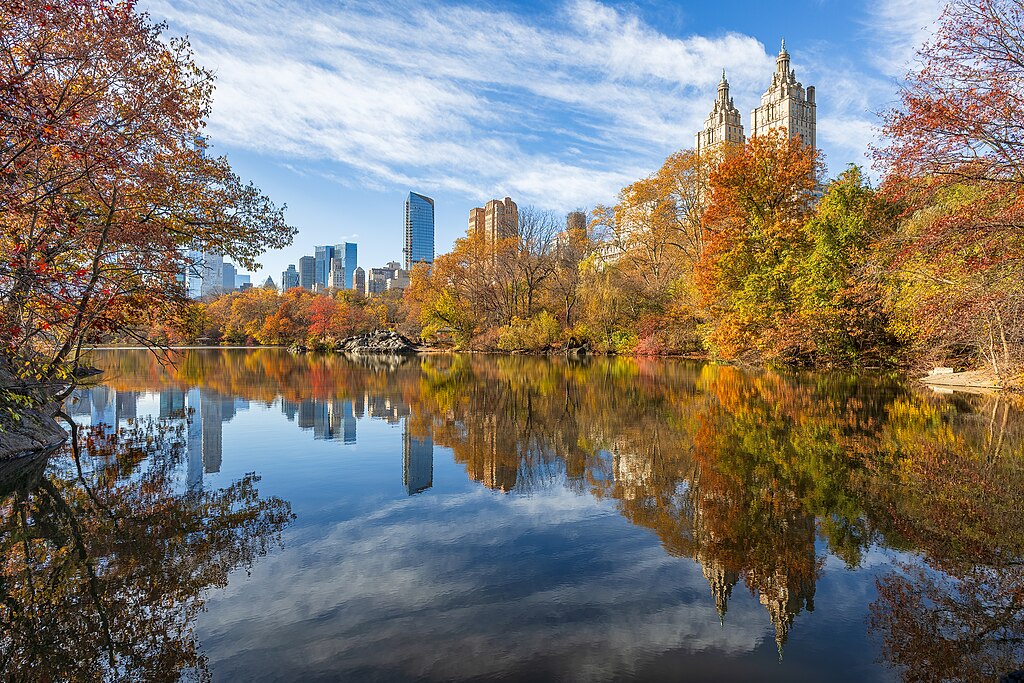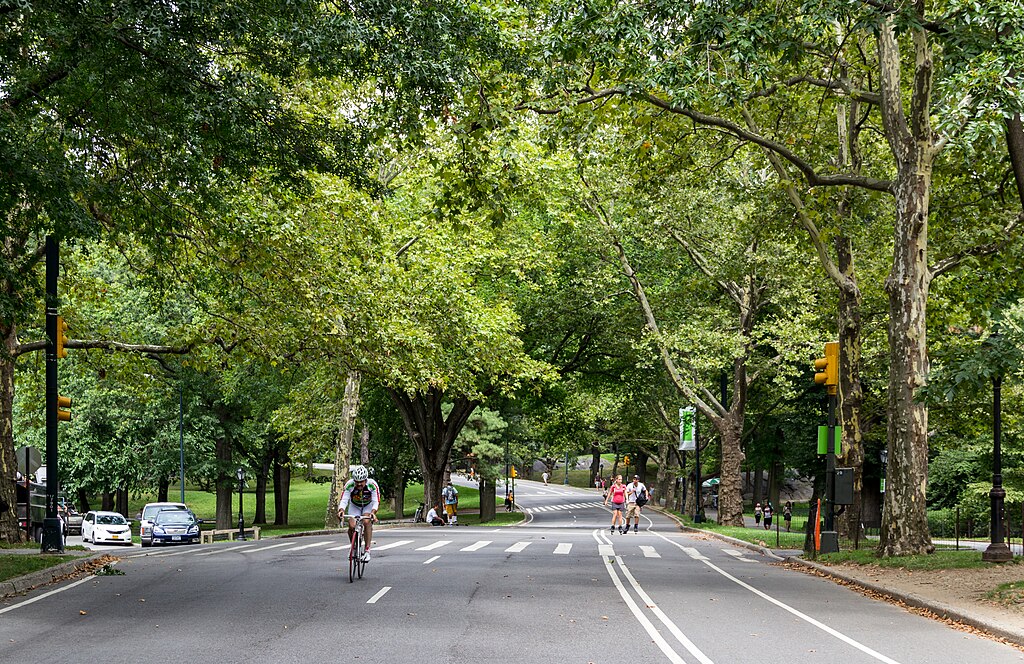
Nestled in the heart of Manhattan, Central Park stands as a beacon of respite and connection amid the city’s fast-paced sprawl. This vast green expanse, stretching across 843 acres, has served New Yorkers and visitors alike since its inception in 1857, evolving from an ambitious municipal project into a beloved urban sanctuary. Central Park exemplifies how thoughtfully planned urban spaces can enhance community well-being, foster cultural expression, and provide essential ecological balance amidst concrete and steel.
Central Park offers a unique contrast to the skyscrapers and busy streets that define New York. For millions, it is a place to unwind, exercise, or simply breathe in nature’s calm, away from the city’s relentless rhythm. Mature trees line winding pathways, scenic lakes reflect the city skyline, and sprawling lawns invite everything from casual picnics to group yoga sessions. Designed by Frederick Law Olmsted and Calvert Vaux, the park’s layout prioritizes naturalistic beauty and accessibility, making it a model for urban green spaces worldwide.
The park is home to over 18,000 trees, including stately American elms along the famed Mall. Flowerbeds burst with color throughout the seasons, while wildlife—songbirds, squirrels, and even the occasional hawk—remind visitors of nature’s quiet persistence. These natural elements provide city dwellers with measurable benefits, from cleaner air and lower temperatures to improved psychological health. Numerous studies link urban green spaces with reduced stress, enhanced concentration, and greater overall happiness, all of which Central Park delivers in abundance.

Central Park’s multifaceted appeal is rooted in its diverse recreational offerings. Joggers trace miles of dedicated trails, cyclists traverse winding roads, and athletes of all stripes flock to tennis courts, baseball diamonds, and expansive lawns for informal games. The park caters to every age and interest: families explore playgrounds, dogs dash through leash-free zones, and skaters glide on the seasonal rinks. Central Park’s drives are closed to most vehicular traffic some hours of the day, creating a safe, open space for exercise and play.
Fitness aside, Central Park is also a venue for relaxation and contemplation. The famous Sheep Meadow draws sunbathers and people-watchers, while the quieter North Woods mimics a tranquil forest retreat. Spots like Bethesda Terrace, with its iconic fountain and intricate architecture, invite moments of reflection or creativity. Whether it’s sunrise yoga or a casual stroll at dusk, the park allows individuals to tailor their experiences, nurturing both body and mind.
While Central Park may begin with nature, its identity is deeply intertwined with culture and community. From its earliest days, the park was envisioned as a “democratic space,” open and accessible to all, regardless of background. Today, it fulfills this purpose as a vibrant stage for public life. Countless concerts, performances, and events unfold year-round, drawing locals and tourists together in celebration.
Shakespeare in the Park, a summertime institution hosted by The Public Theater at the Delacorte Theater, offers world-class theater under the stars, free of charge. The Central Park Conservancy, a private nonprofit partner for park management, organizes guided tours, educational programs, and seasonal festivities, from spring blooms to holiday gatherings. Musicians, artists, and dancers enliven every corner—from spontaneous jazz trios at Bethesda Fountain to painters capturing Bow Bridge’s romantic vistas.
The park also serves as a rally point for civic engagement, hosting everything from peaceful protests to charity runs. Community groups utilize its open spaces for cultural festivals, fitness classes, and environmental stewardship initiatives. This role as a touchpoint—where cultures, causes, and creative energies converge—amplifies Central Park’s significance beyond its physical boundaries.
Beyond human activity, Central Park plays a critical role in sustaining New York City’s ecological balance. Its expansive canopy mitigates urban heat, absorbs stormwater, and helps counter air pollution. The Ramble, a 36-acre wild garden, provides habitat for over 210 bird species, making the park a major destination for birdwatchers and nature enthusiasts.
Efforts to maintain and enhance these ecological functions are ongoing. The Central Park Conservancy and the New York City Department of Parks & Recreation invest in sustainable landscaping, habitat restoration, and biodiversity monitoring. These initiatives underscore the park’s enduring importance as a living, evolving system that supports both human and nonhuman communities.
Central Park’s accessibility is key to its broad appeal. Flanked by subway stops and bus routes, the park welcomes millions from all five boroughs and beyond. Walkways are largely wheelchair-accessible, and the park’s size ensures that even on the busiest weekends, visitors can find a serene nook.
However, like all urban amenities, access remains an evolving challenge. Ongoing outreach by local organizations, including programs offering free summer meals for children and community events designed to welcome underserved populations, aims to ensure Central Park remains a resource for all New Yorkers.

The stewardship of Central Park is a collaborative triumph. The Central Park Conservancy, alongside city agencies and countless volunteers, maintains the park’s infrastructure, landscaping, and programming. Public-private partnerships have transformed Central Park from a period of neglect in the 1970s to its current state of vibrancy and health, demonstrating how collective responsibility can preserve urban heritage for future generations.
Looking ahead, continued investment in sustainability and inclusivity will keep Central Park at the forefront of urban planning and community well-being. Its traditions—concerts on the Great Lawn, autumn leaf-peeping in the Mall, ice skating at Wollman Rink—will endure, evolving to meet new needs and challenges.
More than a tourist attraction or scenic backdrop, Central Park is a living reflection of New York’s diversity and resilience. It offers solace in times of crisis, joy in moments of celebration, and a daily reminder of nature’s capacity to unite and inspire. As urban populations grow and cities worldwide seek models for livable, equitable communities, Central Park’s example will continue to resonate.
Businesses, nonprofits, and local groups all find in Central Park a touchpoint for outreach, collaboration, and civic engagement. Its open spaces enable connection, its culture fosters innovation, and its greenery sustains health and hope. In this way, Central Park stands not simply as an urban haven, but as the beating heart of a city that never stops moving.